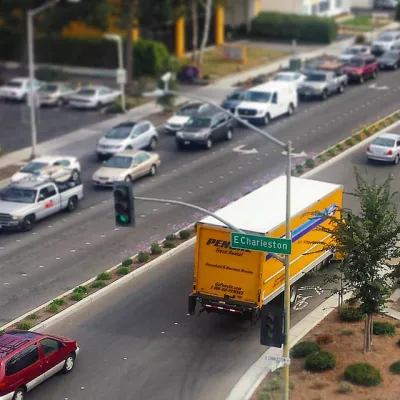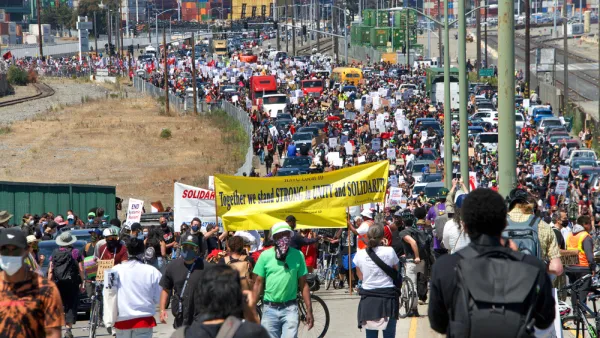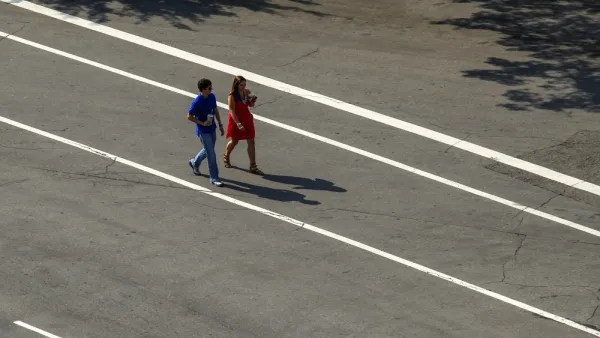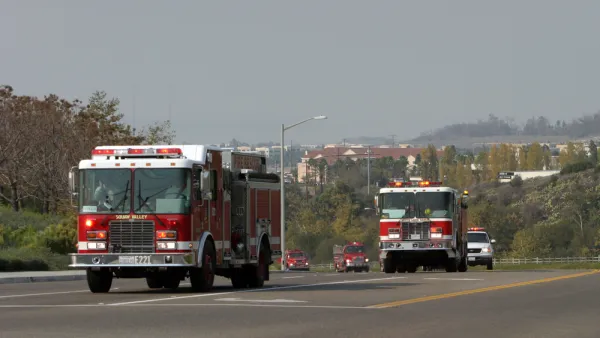An explainer post on that much-lamented feature of contemporary communities—the stroad.

Charles Marohn writes an explainer post about stroads for Strong Towns, answering the second question posed in the headline above thusly: "If we want to build towns that are financially productive, we need to identify and eliminate stroads."
According to Marohn, streets and roads are two different things, and stroads create a hybrid of both of them. Streets are a platform for building wealth, and "[o]n a street, we're attempting to grow the complex ecosystem that produces community wealth," writes Marohn. "In these environments, people (outside of their automobiles) are the indicator species of success. Successful streets are environments where humans, and human interaction, flourish."
Roads, on other hand, connect productive places. Marohn suggests thinking of roads as like a railway, but on for cars.
Stroads then are like futons, says Marohn: "just as a futon is neither a particularly good bed nor a particularly good couch, a stroad is neither a particularly good road or a particularly good street."
With that helpful explanation in place, Marohn goes to put the onus on departments of transportation to take responsibility for the threats posed by stroads, and return them to more productive uses. To supplement the article, Strong Towns also produced the following video, to further drive home these points.
FULL STORY: The Stroad

National Parks Layoffs Will Cause Communities to Lose Billions
Thousands of essential park workers were laid off this week, just before the busy spring break season.

Retro-silient?: America’s First “Eco-burb,” The Woodlands Turns 50
A master-planned community north of Houston offers lessons on green infrastructure and resilient design, but falls short of its founder’s lofty affordability and walkability goals.

Delivering for America Plan Will Downgrade Mail Service in at Least 49.5 Percent of Zip Codes
Republican and Democrat lawmakers criticize the plan for its disproportionate negative impact on rural communities.

Test News Post 1
This is a summary

Test News Headline 46
Test for the image on the front page.

Balancing Bombs and Butterflies: How the National Guard Protects a Rare Species
The National Guard at Fort Indiantown Gap uses GIS technology and land management strategies to balance military training with conservation efforts, ensuring the survival of the rare eastern regal fritillary butterfly.
Urban Design for Planners 1: Software Tools
This six-course series explores essential urban design concepts using open source software and equips planners with the tools they need to participate fully in the urban design process.
Planning for Universal Design
Learn the tools for implementing Universal Design in planning regulations.
EMC Planning Group, Inc.
Planetizen
Planetizen
Mpact (formerly Rail~Volution)
Great Falls Development Authority, Inc.
HUDs Office of Policy Development and Research
NYU Wagner Graduate School of Public Service





























